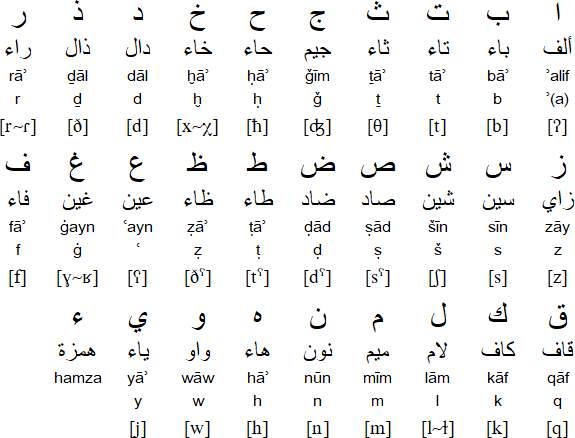Arabic (Arabic: العَرَبِيَّة, al-ʻarabiyyah [ʔalʕaraˈbij.ja] ( listen) or Arabic: عَرَبِيّ ʻarabī [ˈʕarabiː, ʕaraˈbij] ( listen)) is a Central Semitic language that was first spoken in Iron Age northwestern Arabia and is now the lingua franca of the Arab world.[4] Arabic also is a liturgical language of 1.7 billion Muslims.[5][6][7] It is one of six official languages of the United Nations.[8] It is named after the Arabs, a term initially used to describe peoples living from Mesopotamia in the east to the Anti-Lebanon mountains in the west, and from northwestern Arabia to the Sinai in the south.
Arabic is considered, in its standard form and dialects, a single language; it is spoken by perhaps as many as 422 million speakers (native and non-native) in the Arab world,[9] making it one of the six most-spoken languages in the world.
The modern written language (Modern Standard Arabic) is derived from the language of the Quran (known as Classical Arabic or Quranic Arabic). It is widely taught in schools and universities, and is used to varying degrees in workplaces, government, and the media. The two formal varieties are grouped together as Literary Arabic, which is the official language of 26 states and the liturgical language of Islam. Modern Standard Arabic largely follows the grammatical standards of Quranic Arabic and uses much of the same vocabulary. However, it has discarded some grammatical constructions and vocabulary that no longer have any counterpart in the spoken varieties, and has adopted certain new constructions and vocabulary from the spoken varieties. Much of the new vocabulary is used to denote concepts that have arisen in the post-Quranic era, especially in modern times.
Arabic is written with the Arabic alphabet, which is an abjad script and is written from right-to-left although the spoken varieties are sometimes written in ASCII Latin from left-to-right with no standardized orthography.
Arabic has influenced many languages around the globe throughout its history. Some of the most influenced languages are Persian, Turkish, Urdu, Kurdish, Bosnian, Kazakh, Bengali, Hindi, Malay, Maldivian, Indonesian, Pashto, Punjabi, Tagalog, Sindhi and Hausa and some languages in parts of Africa. During the Middle Ages, Literary Arabic was a major vehicle of culture in Europe, especially in science, mathematics and philosophy. As a result, many European languages have also borrowed many words from it. Many words of Arabic origin are also found in ancient languages like Latin and Greek. Arabic influence, mainly in vocabulary, is seen in European languages, mainly Spanish owing to both the proximity of Christian European and Muslim Arab civilizations and 800 years of Arabic culture and language in the Iberian Peninsula, referred to in Arabic as al-Andalus. Balkan languages, including Greek, have also acquired a significant number of Arabic vocabulary through contact with Ottoman Turkish.
Arabic has also borrowed words from other languages including Greek and Persian in medieval times, contemporary European languages such as English and French in modern times.
